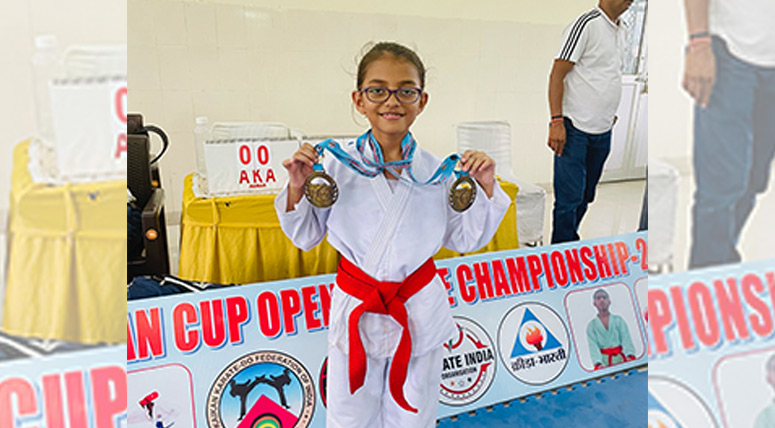THE SPORTING JOURNEY SAGA- NARRATIVE 6
Empowering Women Athletes & Promoting Gender Equality
Bobby Riggs, a former number-one tennis player of the 1940s, once claimed rather unabashedly that women’s tennis fared nothing against the men’s and that at his then-age of 55, he could still beat the topmost women tennis players. That was until Billie Jean King defeated him in a Winner-Takes-All match that has come to be known as the “Battle of the Sexes” in International Sports history..
Quite aptly termed, the Battle of the Sexes reflected how society places men and women on two different ends of the court, one of which happens to be a highly raised pedestal and the other often referred to as the “weaker sex.” This notion of women being the inferior sex has been the breeding ground for a long history of denying women basic dignities in all possible aspects of life- sociocultural, political, economic, and psychological. As a logical consequence, each social institution, whether it be the education system or the sports arena, has a history of seeing women as “less than” their counterparts.
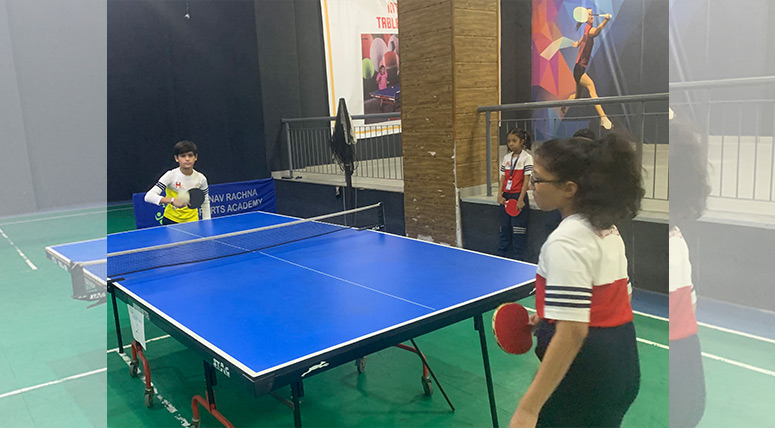
However throughout history, the sports environment for women has experienced a remarkable transformation, progressing from earlier times to the present day. The Indian sports domain has seen an overt shift towards gender parity in the recent few years, and the best schools in India have played a decisive role in making it become a reality. While women take part in different athletic events and become victorious, they not only conquered stereotypes but also attained the mounting points of their fields by making the world records.
Manav Rachna International School which is considered to be one of the top schools in Noida, has been a pivotal agent in the metamorphosis of this educational institution by introducing a culture of inclusivity and providing equal opportunities for girl athletes.
By having dedicated sports programs, supreme level facilities, and mentorship, Manav Rachna International School is forging a new generation of female athletes who are actively changing the course of women’s sports in the country.
The Question of Gender Equality
The question of gender equality is closely scrutinising a society’s gender dynamics in terms of three key resources- power, opportunity, and representation. The 19th century marked the commencement of what we presently recognize as modern feminism, centred on civil rights, especially the capacity to engage in political affairs. The core notion behind the initial feminist movement was that by giving women the right to vote, they can exert influence on the decision-making procedures within a culturally grounded society. While successful in these attempts to garner civil liberties, it was soon realized that organized politics was the tip of the iceberg called patriarchy.
As soon as this realization started gaining momentum, the second wave of feminism realized the importance of looking at power, opportunity, and representation at a more societal level- focusing on gender roles and expectations, and fighting for the idea that women were not only capable of but also deserved the innate right to make their own choices. As women started fighting to make space for themselves in the public arena, the world started opening to the idea of gender equality more sincerely. While most feminist voices were adept at bringing in the question of unequal power and opportunities between the genders, newer waves of feminism started focusing on matters of representation as well. It could no longer be pushed into ignorance that gender dynamics were intricately weaved into the larger fabric of society which contained challenges created by other social matrices as well, such as caste, race, ethnicity at the macro level and neocolonial beliefs, conservative stereotypes, and rigid gender norms at the micro level.
When we look at these intricacies together, it makes sense to us that a sportsman could almost guarantee with certainty that his women contemporaries are no match- that is the precedent that society had been setting for all these centuries in all its institutions, including the world of sports. But, with firm determination and commitment towards their dreams, women have managed to create a space of their own. The best schools in Noida, give female students equal opportunities to showcase their talent in not just academic but sports arena as well.
Gender and Sports
What’s the first thing that pops in your head when you hear about a sporteperson? If this blog’s theme had not been shouting a clue at you, chances are that most of us imagined a muscular physique almost definitely not belonging to a woman. This is how a history of sexism and inequality manifests in our psyche- women have been given less space to exist than men.
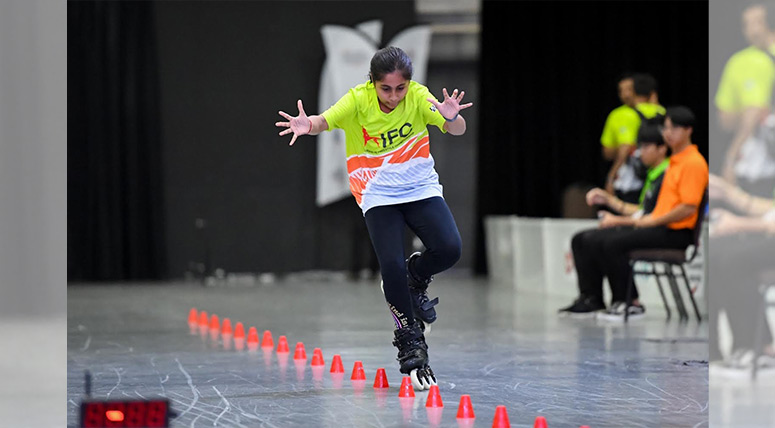
Feminism within the realm of sports goes beyond the fight for parity in opportunities and acknowledgment; it encompasses larger concerns about representation, body image, and the perpetuation of conventional gender roles. Throughout history, sports have predominantly been a male-dominated arena, and women encountered numerous obstacles in their quest for sporting prowess. To illustrate, a commonly cited rationale in the pre-Enlightenment era for prohibiting women from sports was the concern that engaging in athletic activities might jeopardize female fertility. In addition to being at the receiving end of medical knowledge that ignored proper attention to or study of the female anatomy, women have historically been reduced to their gender roles as the forebearers of reproduction. Moreover, the media frequently places greater emphasis on the physical appearances and personal lives of female athletes rather than their noteworthy accomplishments.
A notable transformation has unfolded, characterized by the growing recognition and empowerment of women in both the worldwide and Indian sports domains. This positive change can be attributed to the steadfast dedication of athletes, policymakers, and advocates alike. Notably, female athletes accentuate the connection between sports and feminism which they use as their springboard for campaigning for equitable treatment of women and gender equality. Players like P.T Usha, who achieved global recognition in track and field events, and Karnam Malleswari, India’s first Olympic weightlifting medal winner, prepared the ground for the subsequent breaking of these barriers. Through their success the latter ones of female athletes had a chance to follow in their footsteps. Furthermore, the rise of boxer Mary Kom, wrestler Sakshi Malik, and badminton prodigy P.V. Sindhu has shed an additional focus on the enormous opportunity of Indian women in international sports.These performers have defied social expectations concerning what women are capable of in typically male-dominated fields in addition to taking up gold. All these worldwide achievements have resulted in top CBSE schools in India to put emphasis on sports and especially sports for women.
Feminism in Indian sports is not limited to athletes’ achievements. It also encompasses efforts to improve infrastructure, coaching, and support systems for female athletes. Organizations and Initiatives have emerged to promote gender equality in sports, encouraging participation at all levels. Nevertheless, obstacles exist, such as unfair wages, less exposure to the media, and the continuing influence of the gender norms of the past. Women development in sports in India also continues to be a dynamic movement, thus the need for inclusivity and gender equality in the sports landscape cannot be overstated.
Shattering the Glass Ceiling
The extensive enrolment of women who cast down the walls so as to reach new heights in sports using the opportunities that come with the best international schools in India is a motivation for the generations to come with the belief that they will do the same both on and off the field. For this phenomenon to continue and thrive, it is essential that women athletes are accorded a space of opportunity, power, and representation on an institutional level. This included initiatives such as, but not limited to:
- Ensuring equal resources: When one goes through a marathon of films like Chak De! India and Dangal which addressed the challenges women athletes face, it becomes clear that women’s sports rarely occupy a space of importance when placed against their men counterparts. Such discrimination in funds, training resources and monetary scaffolding limits how far the women athletes can hope to reach, and hence needs to be countered.
- Addressing the pay gap: The gender pay gap is a systemic predicament which leads to a large difference in the amount of pay offered to different genders for the same amount and quality of work done. Nowadays, the sports economy is driven by the market and as a result, monetary value is derived from factors such as viewership in person, advertisement investment, sponsorship and so on. In the past and even more so today, the gender pay gap privileges men perceived as the more worthy group because of patriarchal and sexist notions of work and employment. When combined with stereotypes against women’s sports, such as “women’s sports are not entertaining enough” or “women don’t need to play competitive sports,” the market forces tilt out of favour for women athletes. This also causes apprehension in upcoming generations to consider sports as a valuable career. Hence, external forces such as government aid and addressing stereotypes such that women’s sports get the audience they deserve need to be brought in to guarantee that the pay gap is reduced to nil.
- Elevating role models: When the media decides to cover one category of sports much more than another, it sets a precedent. This is true for anything that the media decides to touch. Hence, it is imperative to use this power of the media to bring in positive results rather than reinforcing sexist boundaries. More visibility of women athletes and broadcasting empowering interactions is a highly potent way to create role models.
- Creating safe spaces: Empowering women almost invariably includes addressing the challenges that limit women in their confined spaces. Such challenges involve but are not limited to, higher vulnerability to harassment, bullying, body negativity, familial and societal expectations and more. For women to be able to strive in the sports arena, the social systems need to safeguard the dignity that they deserve and be able to offer them scaffolding when needed. Ensuring workplace safety is a fundamental necessity that applies universally, and the field of sports is no exception. MRIS, a CBSE affiliated school in Noida ensures that everyone feels safe and sound and there is no hesitation in their minds while indulging them in any kind of sports activity.
Lastly, and of paramount significance, it’s vital to acknowledge that genuine equality can only be achieved when the competitive gap between genders is minimized. Thus, the promotion of partnerships and collaboration between male and female athletes is imperative for nurturing a robust notion of gender equality in the realm of sports.
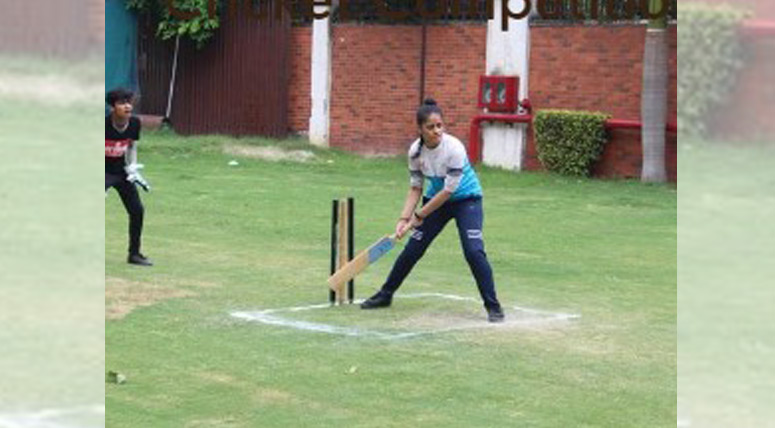
The Battle of the Sexes had been striving for centuries because of genders being pitted against each other. Instead, achieving gender equality and social change is not the sole responsibility of one gender. Participation of both men and women in sports contributes to the development of inclusivity, demolishes gender-related prejudice, and builds good teamwork. It serves as an equalising factor where athletes have the same chance to shine, thus facilitating a better and inspirational sports stage where everyone is treated equally. Indeed, the efforts of MRIS, top school in Noida, to collaborate carry the message of gender equality, promotingness and involvement in a common pull towards the equitable savoury.
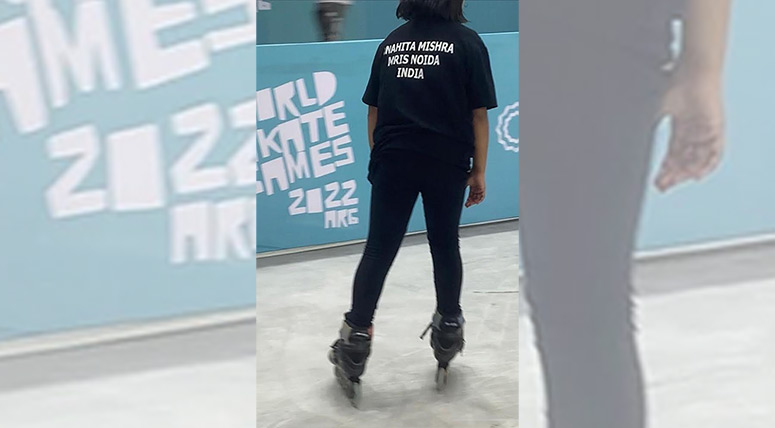
Conclusion
There is no doubt that the contribution of women in sports cannot be undermined. Through their steadfast willpower, and giving no room for surrender, they have not only dispelled the gender stereotypes but also have opened the doors of hope for countless people to overcome obstacles and chase their dreams without any restrictions. The inclusion of women in the world of sports enhances the fabric of athletics, promoting diversity and equality, and emphasizing the limitless potential that goes beyond gender limitations. As we persist in celebrating the achievements of female athletes, it remains of paramount importance that we join forces wholeheartedly to guarantee equal opportunities, support, and recognition for women in sports, thereby securing a future in which they can thrive and excel, both within and beyond the realm of sports.
ALSO READ: School Sports: Platform of Unsung Heroes
ADMISSIONS OPEN: SESSION 2024-25 || EARLY YEARS || GRADE I-IX & XI || MANAV RACHNA INTERNATIONAL SCHOOL
Author: Ms. Roopsi Saxena, PRT English, Manav Rachna International School, Noida

